Cooke House and Legacy Gardens
By Barbara Israel
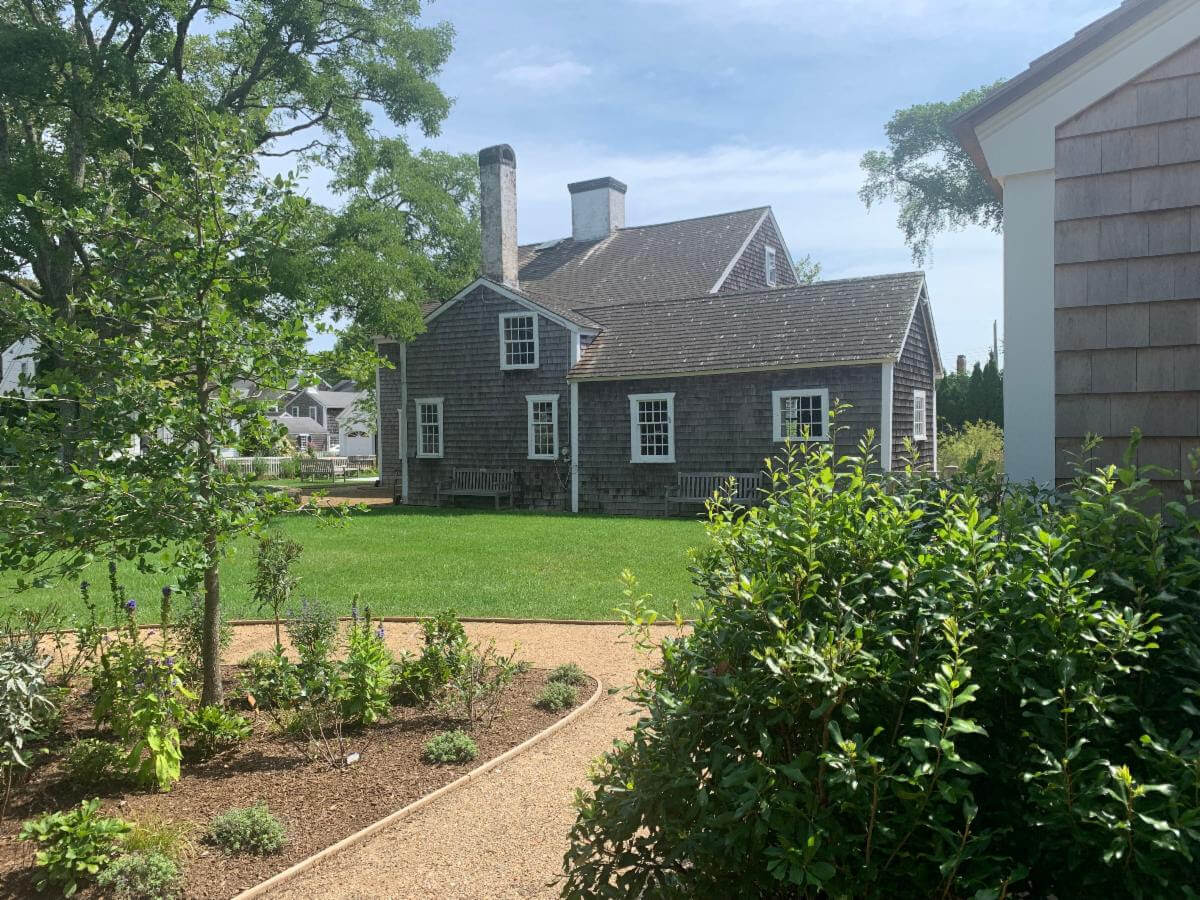 When I went to visit the Cooke House in Edgartown, Martha’s Vineyard last summer I expected a taste of history but I had no idea how extensive it would be. Built in 1766 the house, a small structure, sits on a piece of prime property close to the center of town. It’s the oldest house on the island still in its original location. Built by Thomas Cooke, one of the island’s earliest attorneys and the customs officer, it remained in his family until 1853 when it was sold. In 1932 an organization then known as the “Dukes County Historical Society” bought the property to house their collections.
When I went to visit the Cooke House in Edgartown, Martha’s Vineyard last summer I expected a taste of history but I had no idea how extensive it would be. Built in 1766 the house, a small structure, sits on a piece of prime property close to the center of town. It’s the oldest house on the island still in its original location. Built by Thomas Cooke, one of the island’s earliest attorneys and the customs officer, it remained in his family until 1853 when it was sold. In 1932 an organization then known as the “Dukes County Historical Society” bought the property to house their collections.
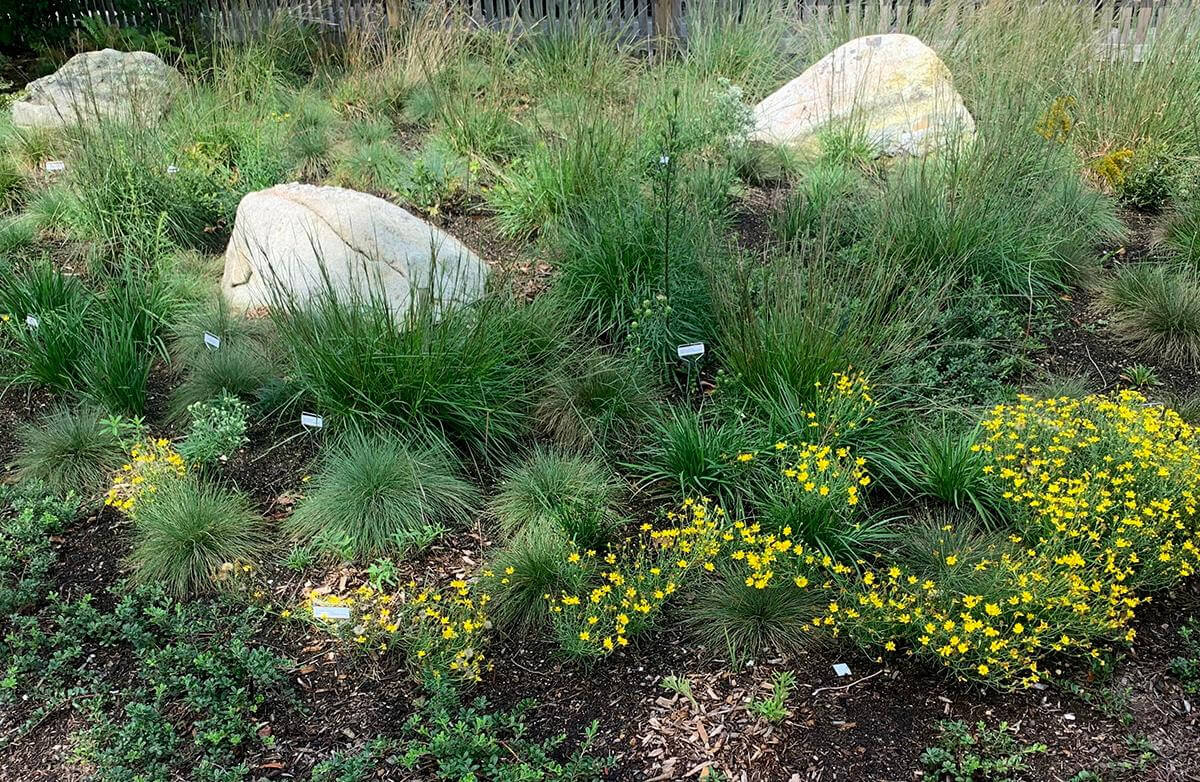 Fast forward to today…that same group became the Martha’s Vineyard Museum in 2006 and used the Cooke House and property as their headquarters until 2019 when they moved to an 1895 marine medical facility in Vineyard Haven. That major move of the collection and offices left the Thomas Cooke House without a defined role. But its age and historical precedents inspired the Museum and a local group, guided by Nancy Vietor, to preserve the house and create a patchwork quilt of gardens that reflect the horticultural history of the island. Many, many donors whose names dot the gardens made it possible to create what Nancy likes to call “the still point in a turning world” (paraphrase from T.S. Elliot’s Burnt Norton). Because the interior of the house had been used as offices its restoration is in the future but the ten interpretive gardens were fully planted by the end of August 2021 when I visited.
Fast forward to today…that same group became the Martha’s Vineyard Museum in 2006 and used the Cooke House and property as their headquarters until 2019 when they moved to an 1895 marine medical facility in Vineyard Haven. That major move of the collection and offices left the Thomas Cooke House without a defined role. But its age and historical precedents inspired the Museum and a local group, guided by Nancy Vietor, to preserve the house and create a patchwork quilt of gardens that reflect the horticultural history of the island. Many, many donors whose names dot the gardens made it possible to create what Nancy likes to call “the still point in a turning world” (paraphrase from T.S. Elliot’s Burnt Norton). Because the interior of the house had been used as offices its restoration is in the future but the ten interpretive gardens were fully planted by the end of August 2021 when I visited.
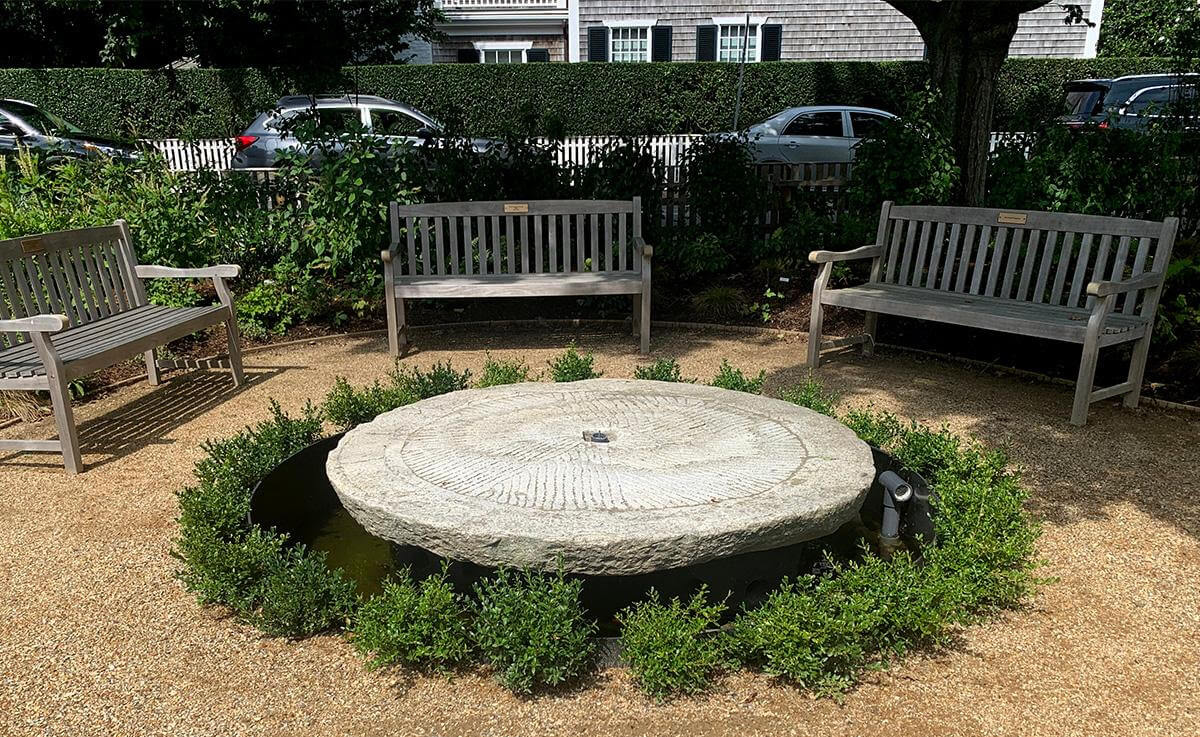 As I walked through the gatehouse my tour began. On the right was the “Sandplain Grassland” garden (above) which I learned comprised a sampling of typical plants that would have grown in the island’s outwash sand plain after the glaciers receded leaving rocks and sediment behind. I saw a variety of grasses, sedge and Lydia flowers set amidst boulders in this post-glacial garden.
As I walked through the gatehouse my tour began. On the right was the “Sandplain Grassland” garden (above) which I learned comprised a sampling of typical plants that would have grown in the island’s outwash sand plain after the glaciers receded leaving rocks and sediment behind. I saw a variety of grasses, sedge and Lydia flowers set amidst boulders in this post-glacial garden.
Still a bit mystified by a pre-historic garden I followed a sweep of plantings of native shrubs and trees to a circle of benches around a large millstone fountain (right). This was the “Community Garden” which honors the Wampanoag people, the first inhabitants of the island. They called the island “Noepe” meaning “Land Amid the Waters”. Evidence of their presence on the island has been carbon-dated to as early as 2270 BC. Many of their descendants still live on aboriginal lands in the southwest of the island in Aquinnah.
During the colonial period the Wampanoag people taught the new settlers an important skill, how to hunt whales and use the oil. The island’s name change came in 1602 when English explorer and privateer Bartholomew Gosnold (1571-1607) renamed the island “Martha’s Vineyard”, to honor his deceased daughter and in acknowledgment of the wild grapes that grew profusely on the land.
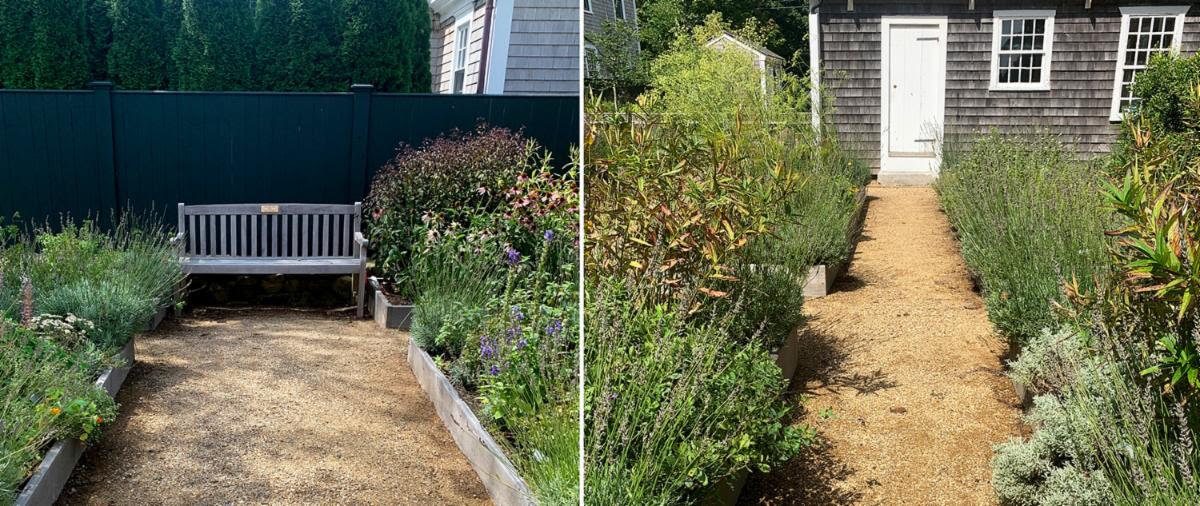 I walked back to the side of the house where I saw a garden of raised beds overflowing with herbs and flowers. These are the “Colonial Gardens” (near right). There will be educational programs explaining and re-enacting the historical use of such natives as baptisia used for blue dye and echinacea, the cone flower, used medicinally by the Wampanoags for a variety of ailments. One section is devoted only to “The Colonial Indigenous” featuring other plants used by the Wampanoags. And nearby in other raised beds are medicinal plants that were European in origin brought by the colonists: borage, fever few, lemon verbena and columbine (far right).
I walked back to the side of the house where I saw a garden of raised beds overflowing with herbs and flowers. These are the “Colonial Gardens” (near right). There will be educational programs explaining and re-enacting the historical use of such natives as baptisia used for blue dye and echinacea, the cone flower, used medicinally by the Wampanoags for a variety of ailments. One section is devoted only to “The Colonial Indigenous” featuring other plants used by the Wampanoags. And nearby in other raised beds are medicinal plants that were European in origin brought by the colonists: borage, fever few, lemon verbena and columbine (far right).
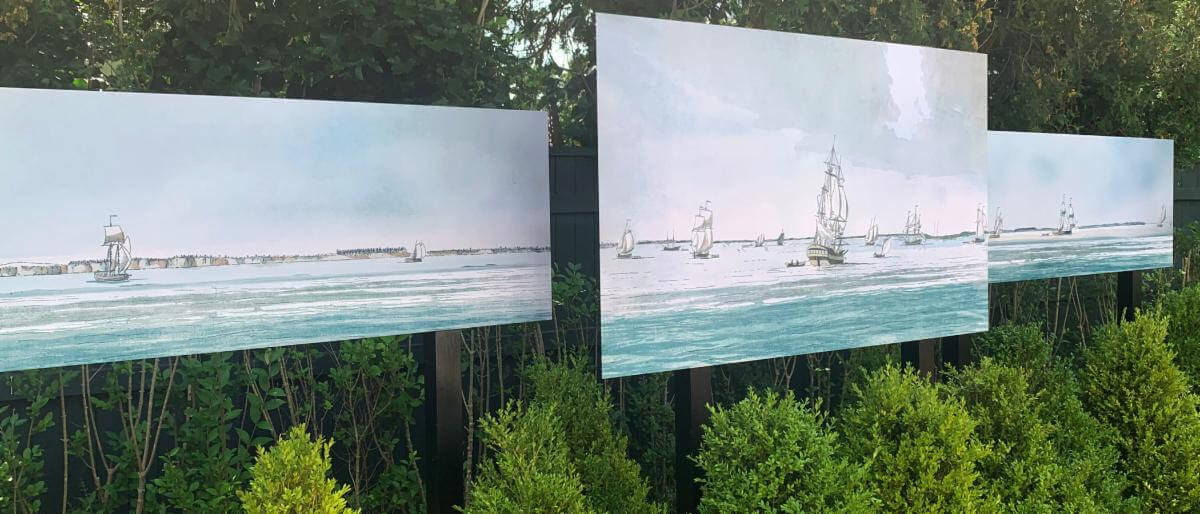 As I turned the corner I realized that though I was at the back of the property I was actually at the front door of the house. A hedge on the right was the backdrop for a long narrow mural recreating the original view that the Cooke House would have had of the harbor from their front door. This was the “Harborscape Garden”. Years of trees and buildings have since obscured that view but the Museum has replicated it. Mr. Cooke, being the customs agent, would no doubt have desired an undisturbed view of the harbor.
As I turned the corner I realized that though I was at the back of the property I was actually at the front door of the house. A hedge on the right was the backdrop for a long narrow mural recreating the original view that the Cooke House would have had of the harbor from their front door. This was the “Harborscape Garden”. Years of trees and buildings have since obscured that view but the Museum has replicated it. Mr. Cooke, being the customs agent, would no doubt have desired an undisturbed view of the harbor.
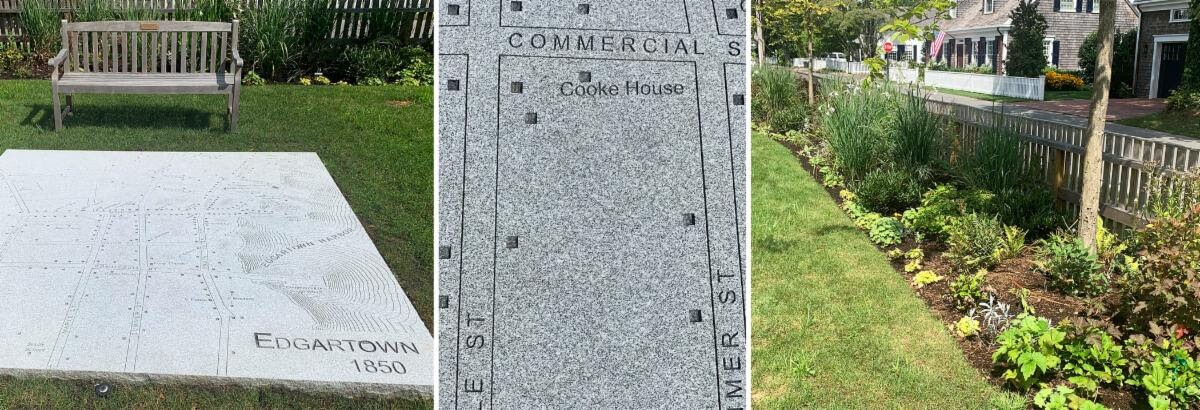
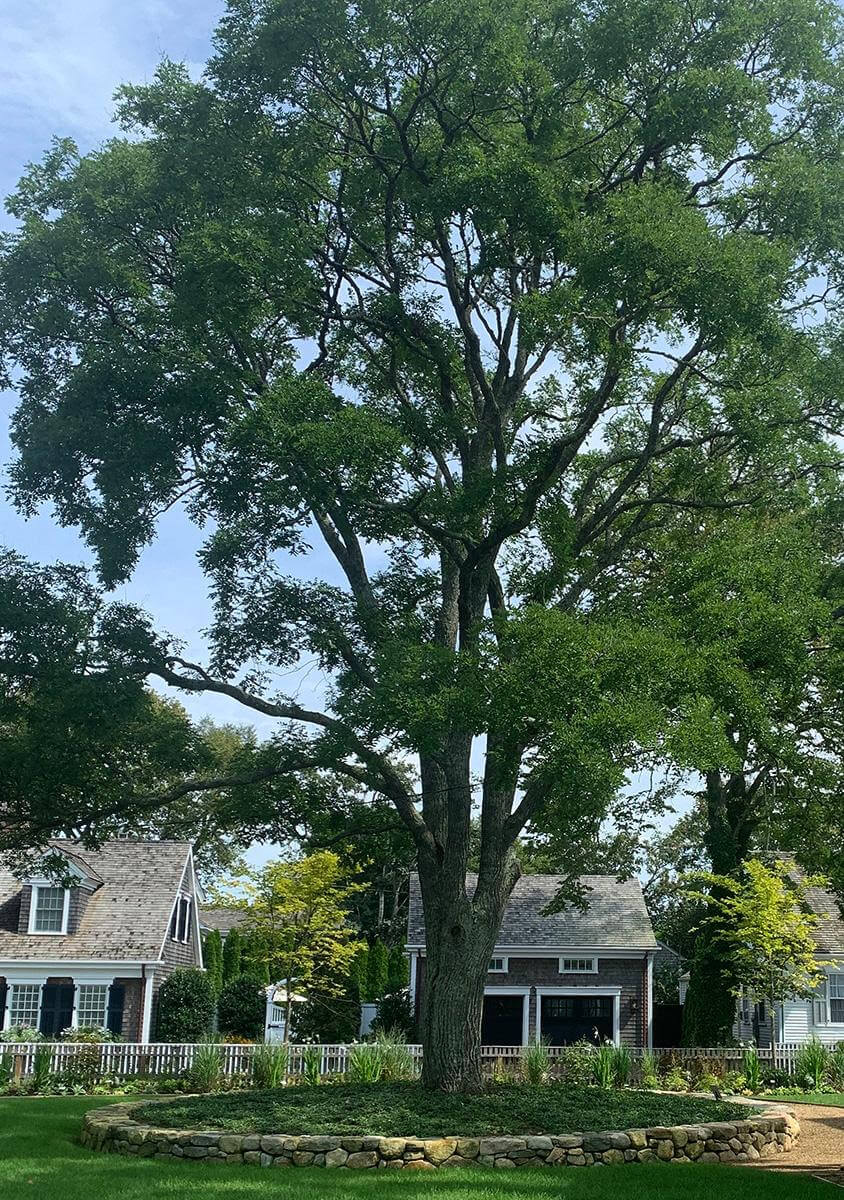 The next discovery was a very large in-ground granite map of Edgartown in 1850 that you could literally walk on! It locates the streets, the houses and the harbor following a mid-19th century map from the Museum collections. Of course, the Cooke House is identified on the map. A contemporary-style perennial border ran along the street fencing to the side of the map. It had just been planted and was full of promise.
The next discovery was a very large in-ground granite map of Edgartown in 1850 that you could literally walk on! It locates the streets, the houses and the harbor following a mid-19th century map from the Museum collections. Of course, the Cooke House is identified on the map. A contemporary-style perennial border ran along the street fencing to the side of the map. It had just been planted and was full of promise.
Right ahead a massive tree dominated the lawn in the center of an elevated bed edged by a circle of stones. I read that it had been grown from a seedling of the renowned, original, giant Pagoda Tree nearby on South Water Street.
At that point I had come full circle, it’s not a large property, and it’s easy to absorb the many distinct gardens. I was impressed by the research and devotion to detail that had made it possible for me to travel the long thread of island history from the days of the glaciers to today’s gardens. The Cooke House Legacy Gardens are a tribute to many but particularly to the early inhabitants, the Wampanoag Tribe and the European colonists through viewing their individual horticultural inheritances.
Storm King
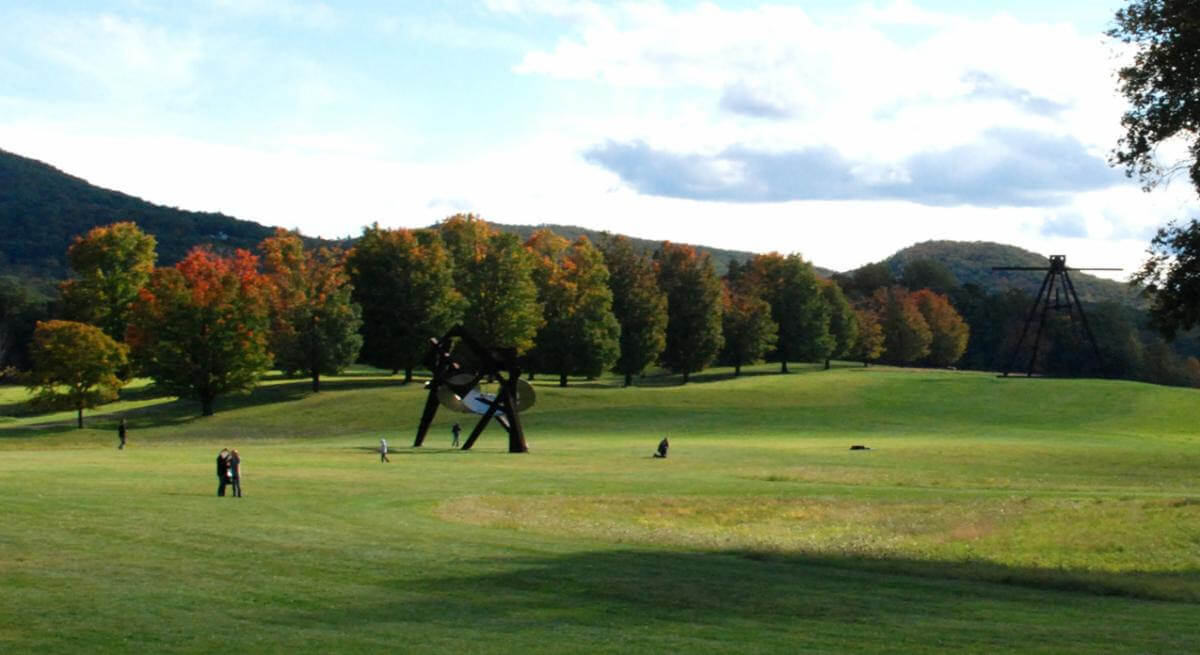
By Eva Schwartz
On October 7th, 2001, my husband, Luis, and I visited Storm King Art Center for the first time. It was not quite a month after September 11th, and we’d escaped New York City for a weekend away. Along with the rest of the world, we were overwhelmed with grief, and we hoped for a reprieve – any sort of distraction. Our friends suggested we check out Storm King, and so we did, having very little notion of what we’d find there. As it turned out, the experience felt nothing short of life-changing. (Photo: All photos by Eva Schwartz, except where noted)
My memories of the day are sensory in nature. I can conjure the way the breeze felt, gentle and enveloping, and the soft, swishing flutter of oak leaves. I can see the gleam of sunlight on the pond’s surface and feel the contours of acorns in my hand. Mostly, I remember feeling overcome with the sheer beauty of the place. Luis and I sat quietly on a hill, our hope restored by the wonder before us.
But it wasn’t just the splendor of the landscape that captivated; it was the extraordinary melding of nature with art. Storm King is classified as a sculpture park, but the moniker feels inadequate to me. I’ve been to several sculpture parks, but not to another that focuses so dramatically on large-scale works or that sites those monumental pieces in such a skillful, and stirring, way.
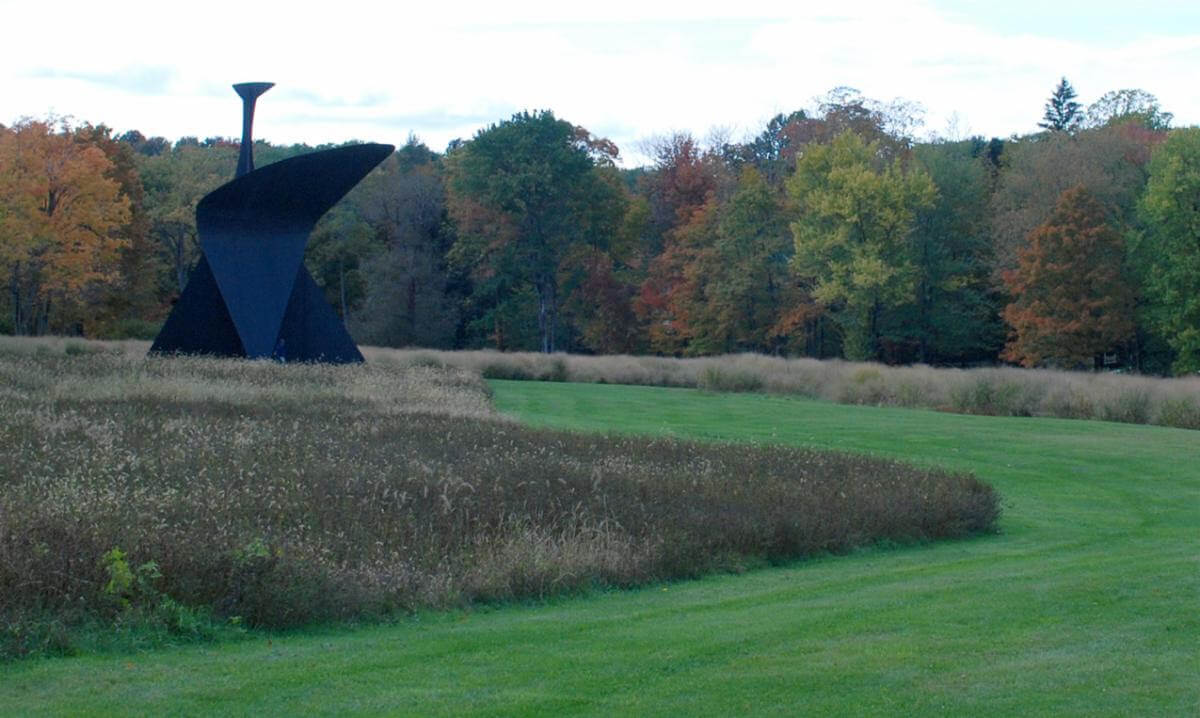
The first work we encountered was Alexander Calder’s The Arch (1975). Calder (1898-1976) had been a favorite artist of mine for years, inspired first by my grandmother’s love for his whimsical circus sculpture, Calder’s Circus (1975), now in the Whitney Museum. In terms of raw scale, The Arch is a far cry from Calder’s more delicately-scaled stabiles and sculptures, but it nevertheless embodies the same sense of organic movement seen in the smaller works. In many ways, The Arch serves as a gateway to Storm King proper. It invites the visitor to cross under and through its arched form and to feel both humbled and uplifted in its shadow. Like many of the monumental works at Storm King, The Arch is placed in a field of tall grasses, nestled in with meandering mowed paths. While there’s no prescribed starting point for a Storm King tour, it’s the first piece you see upon entering the grounds – and every time I see it, it feels like a beacon.
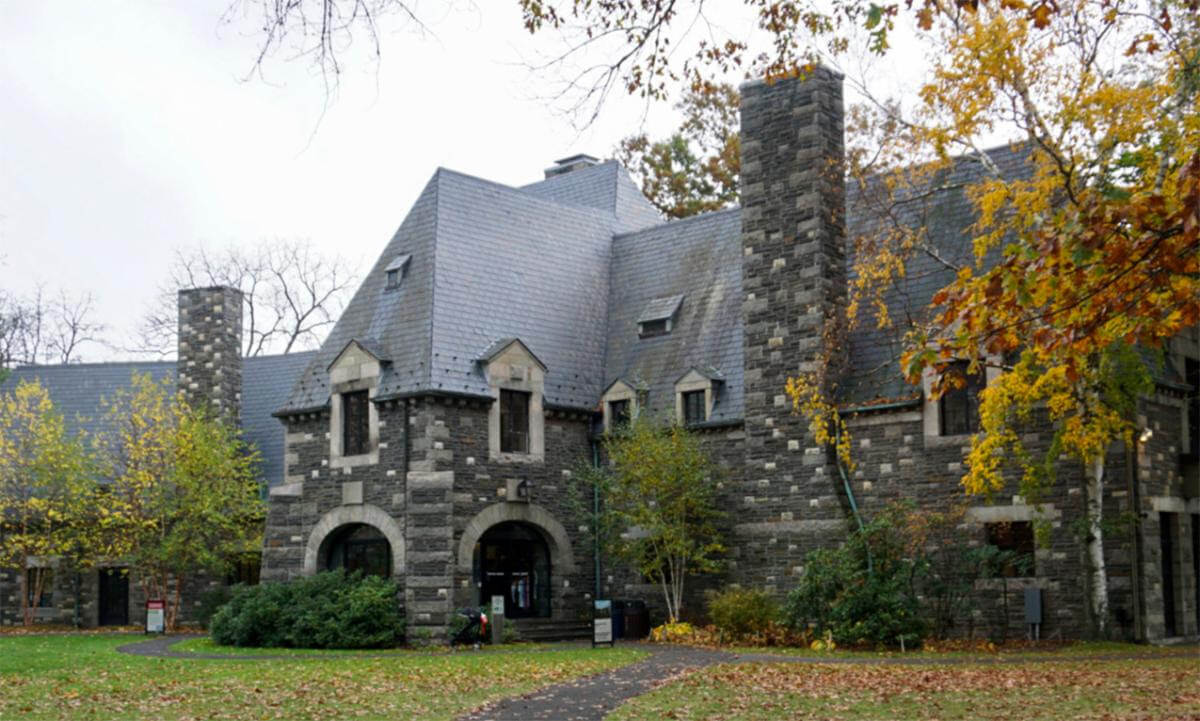 Having become a devotee of this miraculous place within minutes of setting foot there, I naturally wanted to learn more about its history. Storm King’s 500-acre site opened to the public in 1960, founded by visionary partners Ralph E. Ogden and H. Peter Stern. The museum building, located on a hill at the heart of the property, is a repurposed French Normandy-style house built in ca. 1935. This modest structure was originally intended as a museum for Hudson River School paintings. But when early acquisitions unexpectedly included modern sculpture, the founders shifted focus in a big way. At first, human-scale works were placed on the grounds in close range of the museum, but a large purchase of thirteen David Smith (1906-1965) sculptures in 1966 touched off a more expansive use of the surrounding acreage. Over these 60 years, the pastoral landscape at Storm King has been subtly altered to accommodate and show off large-scale works, with painstaking attention paid to framing vistas and guiding visitor movement through the space. (Photo: Ɱ, CC BY-SA 4.0, via Wikimedia Commons)
Having become a devotee of this miraculous place within minutes of setting foot there, I naturally wanted to learn more about its history. Storm King’s 500-acre site opened to the public in 1960, founded by visionary partners Ralph E. Ogden and H. Peter Stern. The museum building, located on a hill at the heart of the property, is a repurposed French Normandy-style house built in ca. 1935. This modest structure was originally intended as a museum for Hudson River School paintings. But when early acquisitions unexpectedly included modern sculpture, the founders shifted focus in a big way. At first, human-scale works were placed on the grounds in close range of the museum, but a large purchase of thirteen David Smith (1906-1965) sculptures in 1966 touched off a more expansive use of the surrounding acreage. Over these 60 years, the pastoral landscape at Storm King has been subtly altered to accommodate and show off large-scale works, with painstaking attention paid to framing vistas and guiding visitor movement through the space. (Photo: Ɱ, CC BY-SA 4.0, via Wikimedia Commons)

There are two remarkable views from Museum Hill, as it’s called: one looking toward the North Woods, and the other toward the South Fields. The North Woods vista is seen from the vantage point of Isamu Noguchi’s Momo Taro (1977-78). Noguchi (1904-1988), a prolific artist, designer, and landscape architect, had a talent for endowing abstract form with a playful spirit. The pitted-peach form of Momo Taro – which happened by kismet when the raw boulder was split for easier workability – reminded the sculptor of the classic Japanese folktale, Momotaro, or the Story of the Son of a Peach (1908). Noguchi requested that a high mound be built to set off this work, and it’s the perfect position from which to take in the view of the valley beyond. It’s worth noting that Momo Taro is one of the only sculptures in the park that visitors are welcome to touch and climb. The whimsy of it reminds me of Noguchi’s imaginative, yet unrealized, design for a Contoured Playground (1941), as both works make use of compelling, ovoid forms rising from the earth. The piece summons interactive play and is often a magnet for families touring with children.
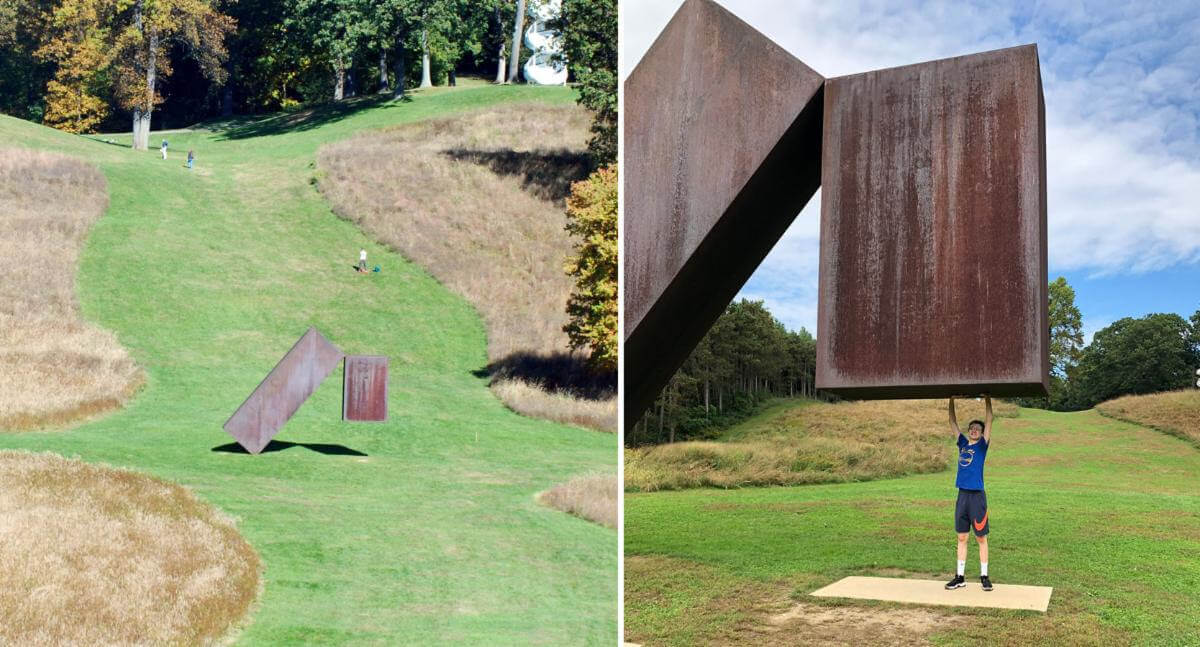 Looking out from Momo Taro toward the North Woods, the viewer can’t help but spot Menashe Kadishman’s Suspended (1977), situated in the valley between two steep rises. Kadishman (1932-2015), an Israeli sculptor renowned for upending everything you thought you knew about gravity, again presents us with a work that baffles the logical mind. It’s no wonder it’s become one of the prime photo-op locations at Storm King.
Looking out from Momo Taro toward the North Woods, the viewer can’t help but spot Menashe Kadishman’s Suspended (1977), situated in the valley between two steep rises. Kadishman (1932-2015), an Israeli sculptor renowned for upending everything you thought you knew about gravity, again presents us with a work that baffles the logical mind. It’s no wonder it’s become one of the prime photo-op locations at Storm King.
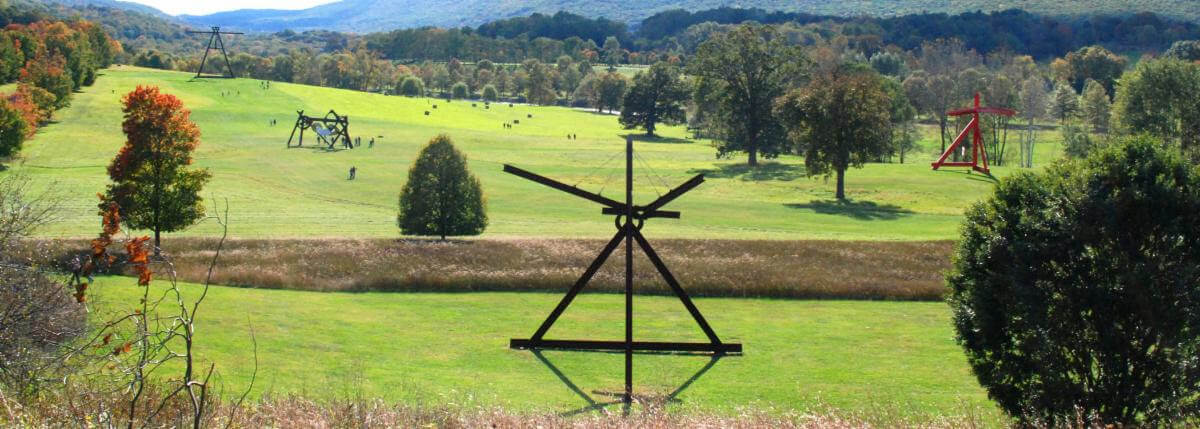
At the opposite end of Museum Hill, visitors may gasp – as I did, that first time – at the sweeping view of the South Fields. This magnificent vista is punctuated by several majestic Mark di Suvero (b. 1933) works, many painted a fiery red-orange. Storm King’s landscape architect, William A. Rutherford (1917-2005), who served as primary architect from 1960 until the 21st century, transformed what was once a gravel pit and acres of corn fields into what we now call the South Fields.
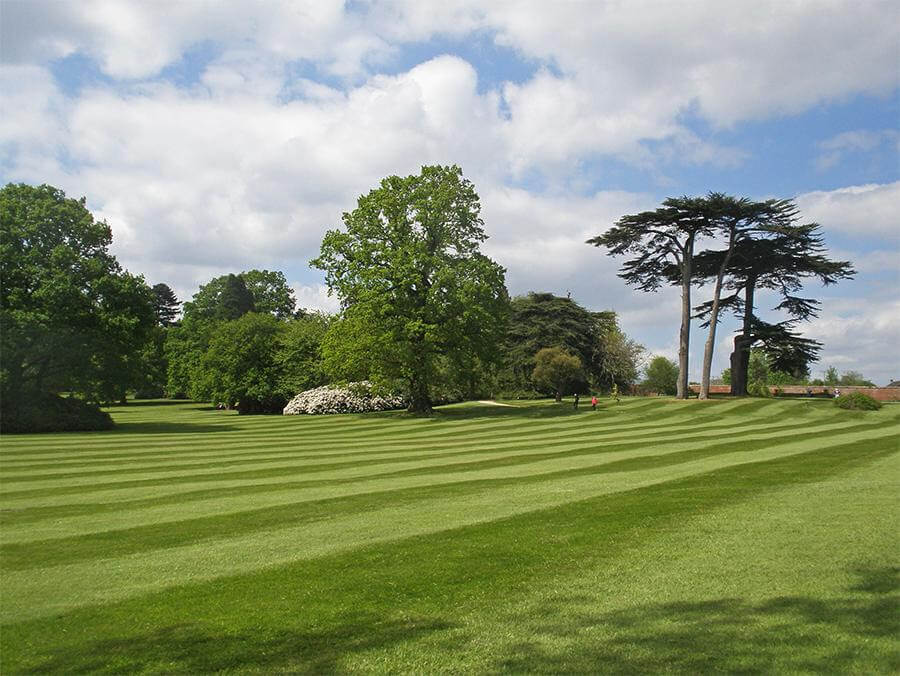 The seemingly perfectly natural beauty of these fields – comprised of native tall grasses, undulating slopes, and clusters of trees – belies the purposeful, years-long molding of this dramatic landscape. [In many ways it’s in keeping with the ideals of Lancelot “Capability” Brown (1716-1783), the English landscape designer widely assigned credit for the naturalistically styled English Landscape Garden. Brown, who referred to himself as a “Place Maker”, designed more than 170 parks and gardens, all of which were carefully planned to look as “natural” as possible (left). His style, which made use of vast lawns, clumps of expertly placed trees, and long vistas, was the “gardenless” form of landscape gardening – prudently engineered with the conceit that it not look at all planned.] (Photo: Amanda Slater from Coventry, West Midlands, UK, CC BY-SA 2.0, via Wikimedia Commons)
The seemingly perfectly natural beauty of these fields – comprised of native tall grasses, undulating slopes, and clusters of trees – belies the purposeful, years-long molding of this dramatic landscape. [In many ways it’s in keeping with the ideals of Lancelot “Capability” Brown (1716-1783), the English landscape designer widely assigned credit for the naturalistically styled English Landscape Garden. Brown, who referred to himself as a “Place Maker”, designed more than 170 parks and gardens, all of which were carefully planned to look as “natural” as possible (left). His style, which made use of vast lawns, clumps of expertly placed trees, and long vistas, was the “gardenless” form of landscape gardening – prudently engineered with the conceit that it not look at all planned.] (Photo: Amanda Slater from Coventry, West Midlands, UK, CC BY-SA 2.0, via Wikimedia Commons)

Of the many di Suvero works dotting the view of the South Fields, Pyramidian (1987-98), stands as the dominant visual anchor. At 65 feet high, it’s the tallest di Suvero in the collection, and the one that most defines this iconic view. My sentimental favorite, though, is Mother Peace (1969-70). Born of di Suvero’s anti-Vietnam War activism, this vital structure entices with a subtly-swinging beam emblazoned with the symbol of peace. To me, it carries a message of inclusion, and a reminder to actively pursue peaceful solutions in my own life. It prompts me to think, and to be engaged.
On that first October visit, I felt the palpable presence of family, near and far. I also realized, most happily, that it happened to be my grandfather’s birthday. He died in 1989, and I don’t believe he ever visited Storm King, but I know he would have loved it. He was a stalwart supporter of the arts and would often, even with limited income, gift us with symphony or theater tickets. As young girls, our “Papa” would insist that we stand and read each and every label at whatever art museum he’d brought us to. At the time, I’m sure I rolled my eyes here and there. But today, I’m so grateful for the time he spent encouraging us to really see and appreciate art.
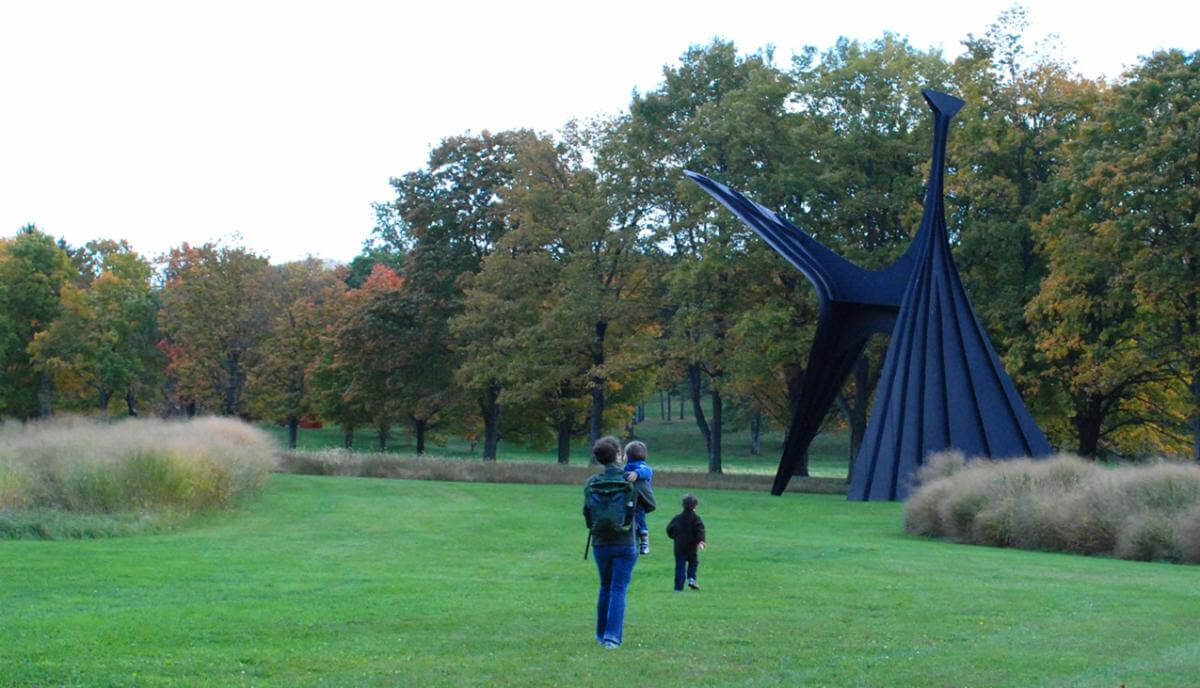 In the years following our initial trip to Storm King, we focused on starting a family, all the while knowing that we’d be taking our kids there when the time was right. We decided that when we returned, we’d do it the first week of October – an homage to my Papa’s October 7th birthday, but also in an attempt to relive that first experience. The time came in 2009, when our sons, Rowan and Liam, were 4 and 1. I can scarcely describe the feeling of finally being able to introduce them to this sacred place – my heart was bursting! Our two city boys ran through the fields, tickled their noses with long, waving grasses, and climbed in and out of Noguchi’s Momo Taro. When little Liam ran out of steam, I slung him on my back and we continued exploring.
In the years following our initial trip to Storm King, we focused on starting a family, all the while knowing that we’d be taking our kids there when the time was right. We decided that when we returned, we’d do it the first week of October – an homage to my Papa’s October 7th birthday, but also in an attempt to relive that first experience. The time came in 2009, when our sons, Rowan and Liam, were 4 and 1. I can scarcely describe the feeling of finally being able to introduce them to this sacred place – my heart was bursting! Our two city boys ran through the fields, tickled their noses with long, waving grasses, and climbed in and out of Noguchi’s Momo Taro. When little Liam ran out of steam, I slung him on my back and we continued exploring.
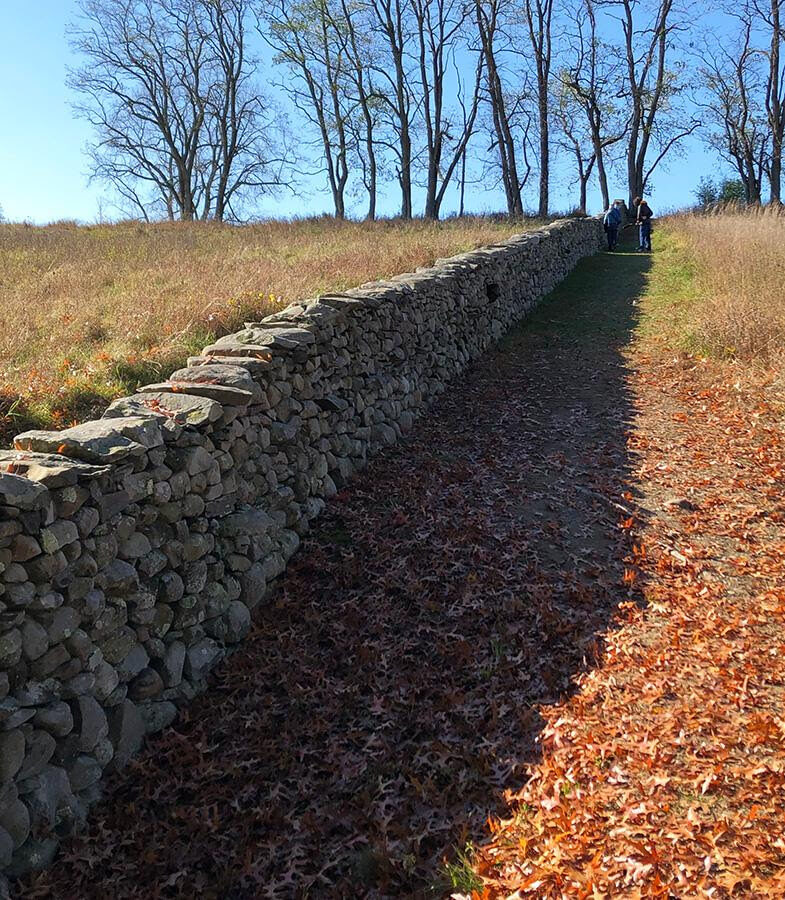 We were delighted to discover that in the intervening years since our first visit, Maya Lin (b. 1959) had constructed the most wonderful work titled Storm King Wavefield (2007-08). We walked up a steep incline, guided by one section of Andy Goldsworthy’s (b. 1956) lovingly laid Storm King Wall (1997-98). At the top of the rise, we looked out at the most beautiful sight – rows of undulating waves built of sodded earth. It is a mesmerizing spectacle, this work – utterly meditative, with a nearly magnetic pull. We sat on that hill for ages, just resting, gazing, and playing with the boys. It is the perfect spot for repose.
We were delighted to discover that in the intervening years since our first visit, Maya Lin (b. 1959) had constructed the most wonderful work titled Storm King Wavefield (2007-08). We walked up a steep incline, guided by one section of Andy Goldsworthy’s (b. 1956) lovingly laid Storm King Wall (1997-98). At the top of the rise, we looked out at the most beautiful sight – rows of undulating waves built of sodded earth. It is a mesmerizing spectacle, this work – utterly meditative, with a nearly magnetic pull. We sat on that hill for ages, just resting, gazing, and playing with the boys. It is the perfect spot for repose.

Storm King has strict rules about not climbing or walking on the waves – understandable given their capacity for erosion. In subsequent years there’ve been times when visitors followed the guidelines, and times when those rules were abandoned. I know how hard it is to reconcile the strong desire to run free on those waves with what you know will happen if everyone did just that. Over time, the waves have been worn bare in large areas, necessitating multi-prong conservation efforts.

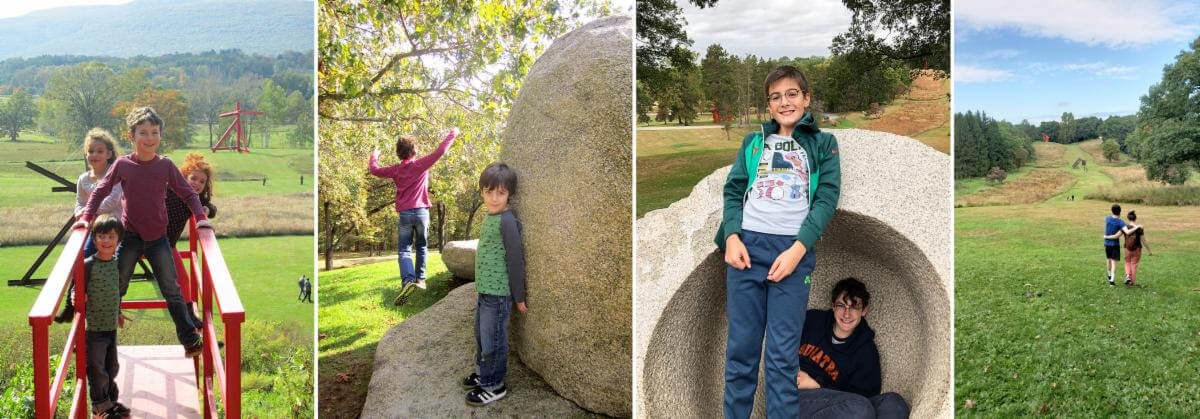
Since 2009, we have visited Storm King almost every year, almost always on that first weekend in October. Each year we go with ever-broadening groups of family and friends – and oh, how fulfilling it is to observe the reactions of first-timers! No visit is ever the same, owing to the Art Center’s special exhibitions and constantly evolving acquisitions. On every visit though, we devotedly seek out our favorites: we follow the serpentine portion of Goldsworthy’s afore-mentioned wall, listening to the sounds of the woods; we reconnect with Momo Taro; we sit and admire the Wavefield; we marvel at the triumph of those million little views, all significant and distinct. At Storm King, we all breathe deeply; it is the yearly ritual none of us ever wants to miss.
A Final Note

We proudly share the news that Barbara has been named one of four recipients of the Bard Graduate Center’s 25th Annual Iris Foundation Awards. On April 27th, she was honored with the award for Outstanding Dealer.
The Iris Foundation Awards were created in 1997 by Susan Weber, director and founder of the Bard Graduate Center and Iris Horowitz Professor of History of the Decorative Arts, to acknowledge important contributions in decorative arts, design history, and material culture made by scholars, patrons and other professionals.
This distinction is especially meaningful because of Barbara’s deep dedication to scholarship and her active participation in the preservation of historic American properties and their exterior objects, in addition to her 35 years of stewardship as a dealer of garden ornament.